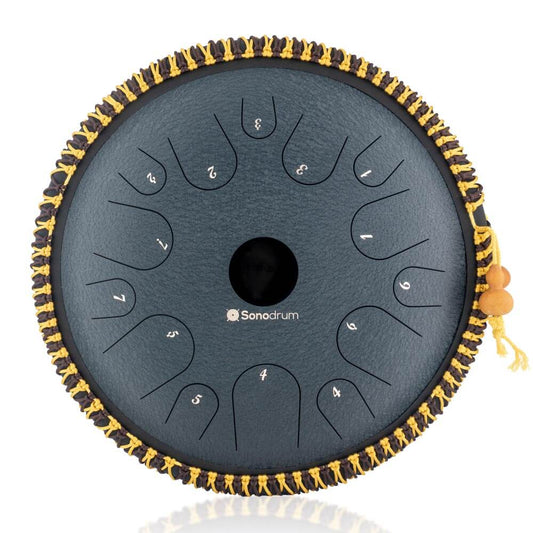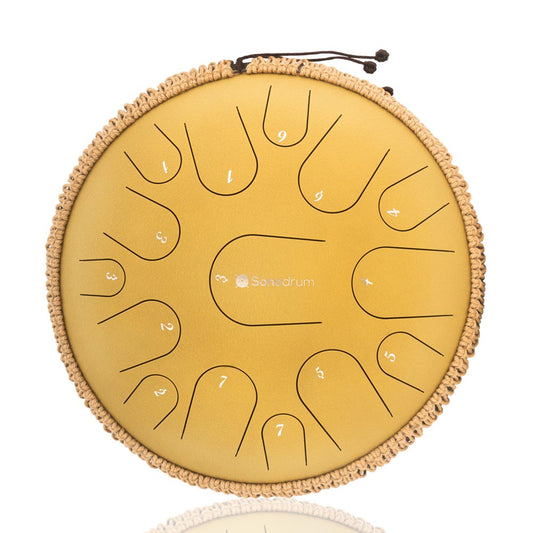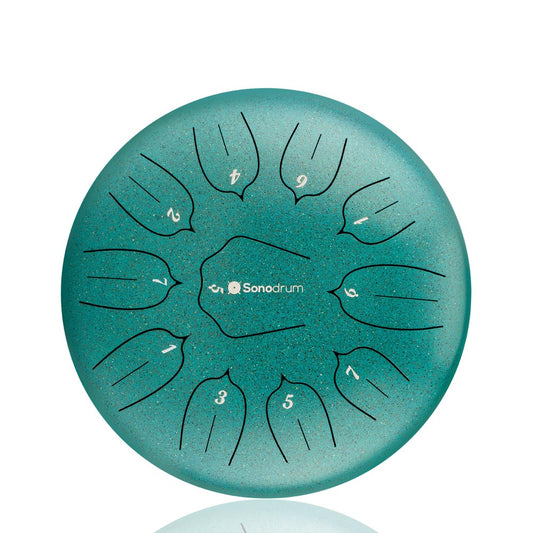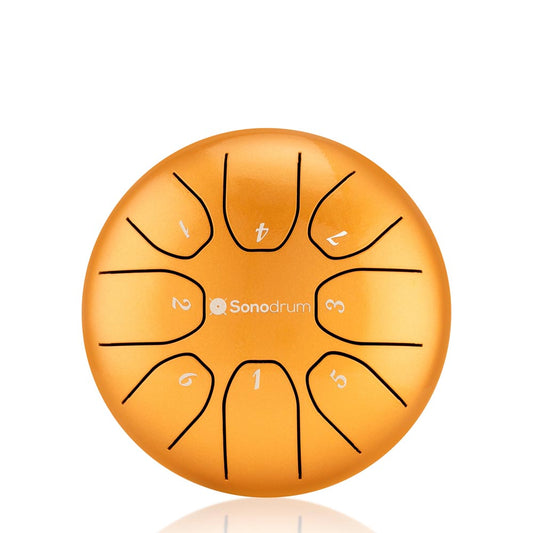In the world of yoga, creating an environment that fosters mindfulness and connection is essential. The incorporation of a tongue drum can enhance this atmosphere with its melodious and soothing sounds. As mindfulness practices gain traction among yoga enthusiasts, the tongue drum offers a unique opportunity for yoga teachers to deepen their students’ meditation experiences. By embracing this innovative instrument, instructors can enrich their sessions, making them more engaging and transformative. This article explores the numerous benefits of using a tongue drum in yoga classes, helping teachers tap into this valuable resource for both personal and professional growth.
Key Takeaways
- The tongue drum enhances the mindfulness experience during yoga practice.
- It creates a calming atmosphere that fosters relaxation and focus.
- Incorporating a tongue drum encourages deeper breathing techniques.
- The melodic sounds facilitate emotional healing during meditation.
- It promotes group connection and collective engagement in classes.
Enhance Mindfulness in Your Yoga Practice
A tongue drum can significantly enrich mindfulness in your yoga practice. The unique tones produced by the drum create a serene environment that encourages practitioners to be present in their movements and breath. By reducing external distractions, the soothing sounds foster a deeper connection to the body and mind.
Create a Calm Atmosphere
The calming effects of a tongue drum resonate throughout the yoga space, establishing an atmosphere conducive to relaxation. Its gentle sounds can help ease anxiety, promoting a peaceful mindset essential for a fulfilling practice. This tranquil environment not only enhances mindfulness but also encourages deeper introspection.
Encourage Deep Breathing
Utilizing deep breathing techniques during yoga sessions becomes more accessible with the rhythmic sounds of a tongue drum. This engaging audio can prompt practitioners to adopt slower breath patterns, thereby enhancing overall relaxation. As students synchronize their movements with the sounds, they cultivate heightened awareness and presence in their practice.
7 Reasons Every Yoga Teacher Should Use a Tongue Drum in Class
The incorporation of a tongue drum into yoga classes greatly enhances the overall experience for both teachers and students. Its unique sounds not only foster emotional healing but also strengthen the connection in yoga, transforming the atmosphere of the practice. Here are key reasons why every yoga instructor should consider this valuable tool.
Promote Emotional Healing
The soothing vibrations created by a tongue drum can evoke a wide range of emotions, providing a pathway for healing. Studies suggest that sound therapy, particularly through drumming, plays a significant role in reducing stress and promoting emotional well-being. Students have reported feelings of release and introspection during sessions, indicating the profound therapeutic effects of sound in their yoga practice.
Facilitate Group Connection
When utilized in a group setting, the tongue drum can enhance group dynamics, fostering a sense of community among participants. The shared experience of sound encourages interactions and connection in yoga, making the practice more inclusive. As students synchronize with the rhythm, they form deeper bonds, enriching their personal journeys and supporting one another in emotional healing.

Increase Student Engagement
The integration of innovative teaching methods like the tongue drum in yoga classes can create a more engaging environment for students. By infusing musical elements into the practice, teachers can captivate attention and inspire a deeper connection to both the movement and the meditation aspects of yoga. This approach not only maintains student engagement throughout the session but also fosters a dynamic atmosphere conducive to personal growth.
Stimulate Interest in Classes
Introducing a tongue drum during yoga classes stimulates interest in learning. The unique sounds and rhythmic patterns of the drum can transform a typical session into an auditory experience that resonates with students. As they experience this new dimension of yoga, their curiosity is piqued, encouraging them to explore and immerse themselves fully in the practice.
Encourage Active Participation
Active participation is a critical component of effective learning. With the use of the tongue drum, students feel more involved during sessions. The rhythm invites them to match their movements to the sounds, creating an interactive flow that enhances retention of techniques learned. This collaborative approach gives students ownership of their practice, making yoga not just an exercise but a shared journey.
Support Guided Meditations
The use of a tongue drum during guided meditation creates a serene auditory environment, making it easier for practitioners to focus and relax. When integrated into yoga and meditation sessions, the soothing tones can enhance the overall experience, allowing participants to immerse themselves fully in their practice.
Complement Visualization Techniques
Visualization techniques thrive on the ability to create vivid mental images. The gentle sounds of a tongue drum can serve as a backdrop that enhances these visual cues. As the drum resonates, it invites deeper engagement with the images being conjured, reinforcing the connection between mind and body. Participants often find that they can visualize more effectively, leading to a richer meditation experience.
Enhance Relaxation Responses
Incorporating relaxation techniques into yoga and meditation is essential for achieving desired outcomes. The rhythmic sound of the tongue drum promotes a profound state of calm, facilitating deeper relaxation responses. This allows individuals to let go of daily stressors, fostering a tranquil mindset necessary for effective guided meditation. Students often report feeling more centered and at peace, significantly enhancing their overall practice.
Conclusion
In summary of benefits, integrating a tongue drum into yoga classes can significantly elevate the practice for both instructors and students. By enhancing mindfulness, promoting emotional healing, increasing student engagement, and supporting guided meditations, yoga teachers can create an enriched environment that fosters growth and connection. The soothing sounds of the tongue drum create a serene atmosphere, encouraging participants to immerse themselves fully in their practice.
As discussed, this unique instrument is not merely an addition but a transformative tool that can set classes apart. With an emphasis on creating deeper connections and facilitating relaxation, the tongue drum offers a compelling enhancement to the overall yoga experience. For yoga teachers looking to innovate and inspire, this rhythmic journey invites exploration and personal growth.
In conclusion, embracing the tongue drum could be the key to unlocking new levels of engagement and calm within your classes. By considering this valuable resource, yoga teachers can ensure their sessions resonate deeply with every participant, making yoga not just a practice, but an enriching experience that lingers long after the class ends.
FAQ
How can a tongue drum enhance my yoga classes?
Incorporating a tongue drum into your yoga classes can elevate the overall atmosphere by producing calming sounds that promote mindfulness, facilitating deeper relaxation and focusing your students’ attention on their practice.
What are the benefits of sound therapy with a tongue drum?
Sound therapy using a tongue drum can evoke a range of emotional responses, aiding in emotional healing and reducing stress. The unique tones can help create a supportive environment for students to explore their feelings during practice.
How does a tongue drum foster group connection among students?
The melodious tones of a tongue drum resonate with students, fostering a sense of community and connection. When played in a group setting, it encourages shared experiences and enhances the collective energy of the class.
Can a tongue drum help with guided meditations?
Yes, the soothing sounds of a tongue drum complement guided meditations by creating a peaceful environment that enhances visualization techniques and promotes deeper relaxation responses among practitioners.
How do I introduce a tongue drum into my yoga practice?
Begin by incorporating the tongue drum during warm-ups or relaxation periods in your class. Gradually integrate its sounds into specific poses or sequences, allowing students to connect more profoundly with their breathing and movements.
Will my students enjoy the sounds of a tongue drum?
Most students find the resonant and melodic sounds of a tongue drum to be soothing and enjoyable. It adds an engaging element to the class that can stimulate interest and encourage active participation.




